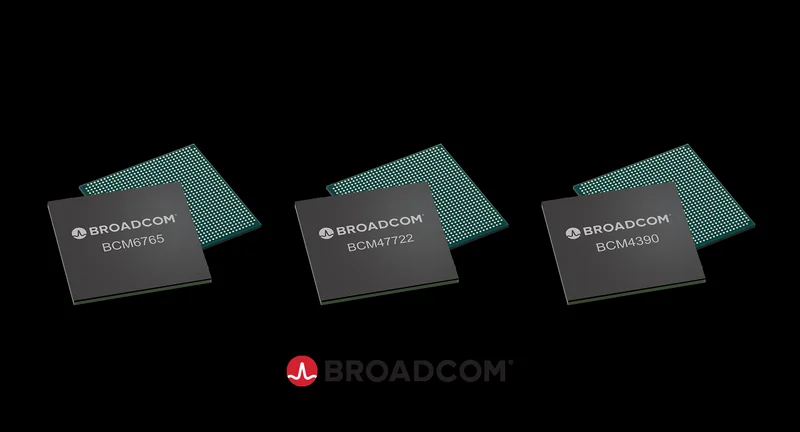The Market's Two Minds: An AI Arms Race or a Financial Retreat?
In the quiet hum of pre-market trading, when algorithms do their silent work and most of the world is still brewing its first coffee, the market often reveals its anxieties and ambitions. Most of the time, it's just noise—a flicker of red here, a splash of green there. But every so often, a few tickers light up in a way that tells a coherent, if contradictory, story. Today is one of those days.
On one side, you have Broadcom, a semiconductor titan, making a world-altering pact with the high priests of artificial intelligence at OpenAI. On the other, you have Ericsson, the Swedish telecom giant, executing a textbook play of financial engineering to appease shareholders. Both were rewarded by the market. And that divergence tells us everything we need to know about the deep uncertainty gripping investors today. They are simultaneously betting on a capital-intensive, world-building future and a fiscally conservative, manage-the-decline present. The question is, can both of these strategies possibly be right?
The Blueprint for Tomorrow's Empire
Let's start with Broadcom. The stock initially jumped nearly 10%—or 9.88% to be more exact—on the announcement of its official partnership with OpenAI. The plan is to jointly build out 10 gigawatts of custom AI accelerators. This isn't just another supplier agreement; this is a foundational play.
For 18 months, the two companies have been working in secret, and now they’re going public. They aren't just building chips; they're designing entire systems—networking, memory, and compute, all bespoke for OpenAI’s specific workloads and built on Broadcom’s Ethernet stack. Sam Altman’s quote that “these things have gotten so complex you need the whole thing” is the key takeaway. He’s signaling the end of the off-the-shelf era for hyperscale AI. This is vertical integration on a colossal scale.
Think of it like this: for years, AI companies have been buying high-performance engines from a few key suppliers. Now, OpenAI is effectively partnering with a master engineer to design and build a completely custom Formula 1 engine, chassis, and aerodynamics package from the ground up, all for a single purpose. It’s an attempt to gain an insurmountable edge by controlling the entire hardware stack, thereby lowering long-term computing costs.

But here’s the part of this story that, as an analyst, I find genuinely perplexing. The financial terms were not disclosed. We have a 10-gigawatt ambition—a massive energy and capital commitment—with absolutely no price tag attached. The market reacted with initial euphoria, followed by a 2.4% pre-market pullback. Is that the market taking profits, or is it a delayed reaction to the sheer, unquantifiable risk of this venture? How can you properly value a deal when the cost side of the ledger is a complete mystery?
The Art of Managing the Present
Now, pivot to Ericsson. Its US-listed shares popped over 10% for a completely different reason. There was no grand vision of the future here. There was just a clean, simple earnings beat.
The company posted an adjusted EBIT of 15.4 billion Swedish kronor, handily beating the consensus forecast of 14.1 billion. That’s a solid 9.2% surprise. But the story is in how they got there. The core networks division, the engine of the company, saw sales fall by 11%. Let that sink in. The primary business is shrinking. The growth came from cost-saving measures and, most significantly, the $1 billion sale of its Iconectiv unit, which generated a one-time capital gain of 7.6 billion kronor.
This is a classic corporate playbook. When organic growth falters, you start optimizing the balance sheet. You cut costs, you sell non-core assets, and you use the proceeds to boost the bottom line and promise "increased shareholder distributions." It’s a strategy that signals stability and discipline, and in a nervous market, it works. Investors, starved for tangible returns, reward it.
But it begs a critical question: is this a sign of strength or a sophisticated management of decline? While Broadcom is pouring untold billions into building the next generation of infrastructure, Ericsson is selling off pieces of its current infrastructure to fund shareholder returns. Both stocks went up. This isn't just market noise; it's a profound statement about a market that has no consensus on what "value" even means anymore. And caught in the crossfire are players like Navitas Semiconductor, which soared 24% on little more than renewed trade optimism and a vague "update" on its collaboration with Nvidia—a perfect example of pure sentiment chasing in a market desperate for a clear direction.
A Market at War With Itself
What we're seeing isn't a coherent investment thesis. It's a market hedging its bets against two mutually exclusive futures. One path is the Broadcom/OpenAI vision: a high-risk, high-spend, winner-take-all arms race to build the computational foundation for the next century. The other is the Ericsson model: a low-growth reality where cash flow is king, and the best a company can do is manage its assets prudently and return capital to its owners. Investors are rewarding both the builders of the new world and the liquidators of the old one. This can't last. One of these theses has to break. The data suggests the operational momentum is with the builders, but the near-term financial certainty lies with the managers. And right now, the market is paying for both.









